Birds - the record holders
The largest bird in the world today is the Ostrich (Struthio camelus). The North African Ostrich subspecies is the tallest of all the Ostriches. Males can be 2.74 m tall. The head and neck can be 1.4 m long. The average height is around 2 m.
Ostriches also have the longest legs. Their legs can be up to 1.3 m long. A number of swifts have the shortest legs. Their family name Apodidae means 'lacking legs'.
Ostriches also have the largest eggs. The egg measures 15 - 20 cm long, 10 - 15 cm in diameter and weighs 1 - 1.78 kg.
And they are the fastest runners. They can run up to 72 km per hour over short distances.
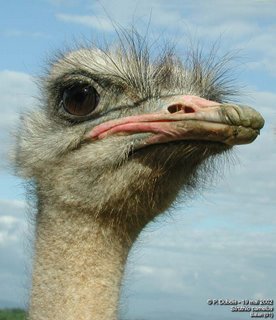
The smallest bird in the world is either the Bee Hummingbird (Mellisuga helenae) from Cuba and the Isle of Pines or the Little Woodstar (Acestrura bombus) of Ecuador and northern Peru. The male hummingbird is 57 mm and weighs 1.6 g. Half of its length is taken up by the bill and the tail. Some experts think the Woodstar is even smaller.

The bird with the largest wingspan is the Wandering Albatross (Diomedea exulans) which lives in the southern oceans. Its wings average 2.54 - 3.51 m. The largest recorded wingspan was of a very old male whose wings measured 3.63 m.
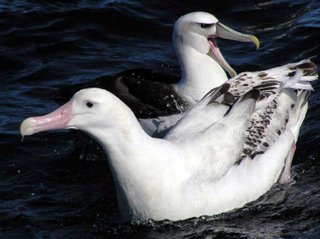
The Australian Pelican (Pelecanus conspicillatus) has the longest bill of any bill measuring 34 - 47 cm.
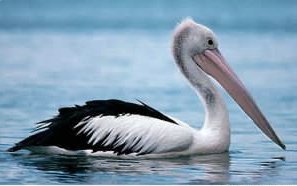
The bird with the longest bill to body size is the Sword-billed Hummingbird (Ensifera ensifera) that lives in the high Andes from Venezuela to Bolivia. Its bill is 10.2 cm long, four times longer than the bird's body, not counting the tail.

Jacanas (Jacanidae family) have the longest toes relative to body length. Some of the larger Jacanas can have 'toespans' of at least 15 cm.

The longest feathers of a wild bird relative to body size, are the central tail feathers of the male Ribbon-tailed Bird of Paradise (Asptrapia mayeri). It lives in the mountain rainforest of New Guinea.

The Peregrine Falcon (Falco peregrinus) is the fastest bird and fastest of any kind of animal. It can reach speeds of at least 200 km when diving for prey in the air.

Hummingbirds have the fastest wingbeat. The Horned Sungem (Heliactin cornuta), in tropical South America beats its wings at 90 beats per second. Hummingbirds, Family Trochilidae have been recorded in experiments, hovering for 50 minutes.

The Artic Tern (Sterna paradisaea) is believed to migrate the furthest. It flies from the shores of the Arctic to the Antarctic. One banded Arctic Tern covered 22 530 km flying from the White Sea Coast of Russia to Fremantle, Western Australia.
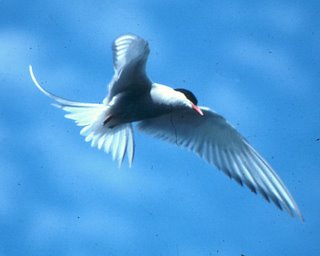
Relative to body size the Long Rufous Humingbird (Selasphorus rufus) makes the longest migration. It measures 10 cm and flies from as far north as Alaska to Mexico and back again - 10 000 km.

The highest recorded altitude for any bird was 11 277 m for a Ruppell's Griffon Vulture (Gyps Rueppellii). It flew into a plane.
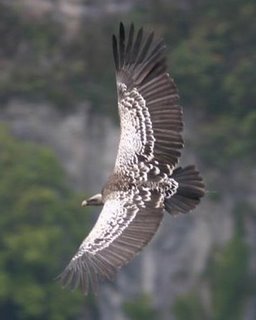
The smallest known egg is the egg of the Vervain Hummingbird (Mellisuga minima) of Jamacia and nearby islets. The egg is barely the size of a pea and measures less than 10 mm in length and weighs 0.356 g.

The largest nest was built by a pair of Bald Eagles (Haliaeetus leucocephalus) was 2.9 m wide and 6 m deep. The Mallee Fowl (Leipoa ocellata) of Australia builds a mound for a nest. These mounds have been measured at 4.57 m high and 10.6 m long. A mound this size means the bird moved 250 cubic metres of vegetation and 300 tonnes of soil. The Rhinoceros Auklet (Cerorhinca monocerata) which measures 35 cm and nests on islands in the North Pacific excavates a burrow of 2 - 3 m in length. Burrows up to 6 m are not uncommon and 8 m burrows have also been found.

Emperor Penguins (Aptenodytes forsteri) make the deepest dive of any bird ranging from 444 - 483 m. They also stay under water the longest. The maximum dive time recorded has been 18 minutes.

The fastest swimmer is probably the Gentoo Penguin (Pygoscelis papua) at 27 km per hour.

The only poisonous birds known are the three species of Pitohui from Papua new Guinea - the Hooded Pitohui (Pitohui dichrous) the Rusty Pitohui (P. ferrugineus) and the Variable Pitohui (P. kirhocephalus). The Hooded Pitohui is the deadliest. The skin and feathers contain almost the same homobatrachotoxin as the Poison Arrow Frogs.


<< Home